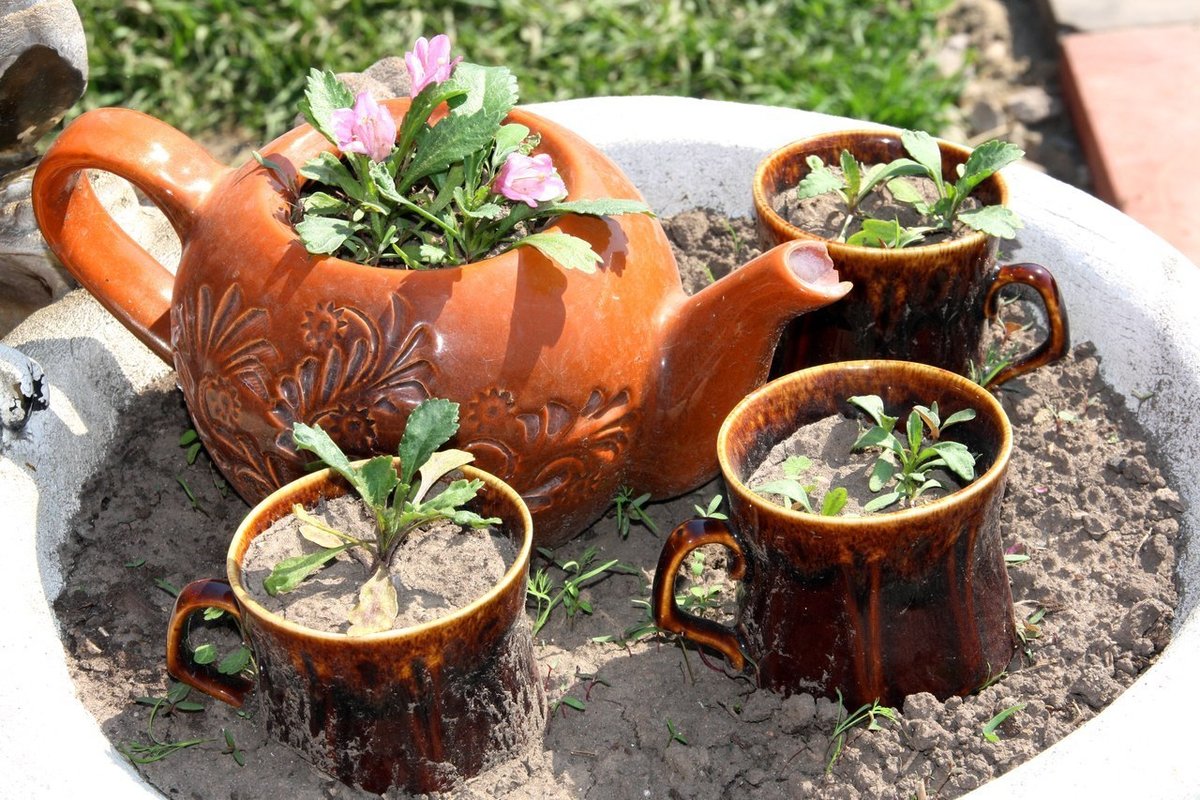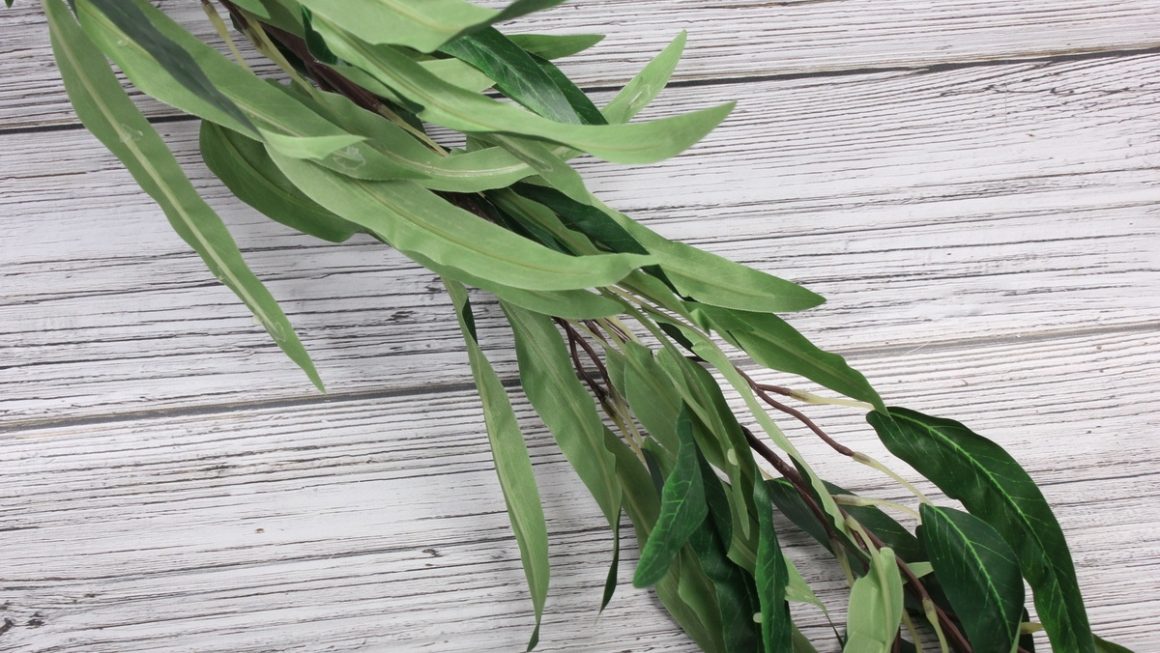Who hasn’t found a broken flower pot hidden behind a garden shed or a rusty rake relegated to a corner of the garage? What if these objects, often destined for the rubbish tip, could become unexpected allies in creating a trendy and eco-friendly garden, without spending a penny?
Autumn is the perfect time to landscape or enhance your garden just before winter. With a few clever ideas and a fresh look at the resources you already have, you can transform waste into decorative and functional treasures. Ready to give your forgotten objects a second life?
Give your broken pots a new lease of life: the art of upcycling in the garden
Chipped or broken terracotta pots that have accumulated over the years can be turned into real assets for creating original and natural borders. Before you think about throwing them away, imagine them incorporated into your flower beds, defining the outline of a lawn or marking out a shaded area.
Why terracotta shards work wonders as borders
Terracotta, which is resistant to both cold and moisture, can be used to create soft lines and varied shapes. Even irregular pieces of pottery can be used to create unique borders, imbuing the garden with a handcrafted charm while promoting drainage and limiting the growth of unwanted grass.
Play with shapes and colours for a unique border
Stack the shards overlapping each other or plant them vertically, with the glazed side visible or hidden depending on the desired effect. Vary the shades of orange, beige or brown to match the style of your garden, whether it’s Zen, Mediterranean or more classic. Be bold and alternate with brick or pebbles to add rhythm to the visual structure of your outdoor space.
Tips for choosing and preparing your pieces safely
Before use, check that each piece has no sharp edges to avoid injury to humans or animals. Use a hammer to adjust the contours or lightly sand the sharp edges. Autumn, a period less conducive to vigorous plant growth, is the ideal season to prepare these borders without hindering the growth of your flower beds or lawn mowing.
Forgotten tools, treasures to be revealed: when old gardening becomes trendy
If you thought that a rusty spade or an old hoe were no longer of any use, think again. In 2025, these time-worn tools will become key pieces of natural design, giving your outdoor space a look that is both vintage and eco-friendly.
Rusty pickaxes, spades and rakes: how to turn them into decorative assets
Whether it’s a large rake or a small pair of secateurs, every tool has its place, whether marking out a path, supporting a border or highlighting the transition between a patio and a bed of plants that don’t need watering. The patina of the metal, accentuated by time, brings unexpected and elegant relief to the garden.
Surprising ideas for lining up or assembling your tools on the border
Arrange your tools by planting them vertically or in a staggered pattern to create a dynamic line. Connect them together with wire or by pushing them into the ground at different levels, depending on the slope of the ground. Mix shapes to evoke the atmosphere of an old family garden or the rigour of a Zen garden.
Secure and anchor your tools for durable borders
Make sure you push each tool deep enough into the ground, especially in autumn when the rain softens the soil. Seal the heaviest ones in a concrete or stone base if necessary to ensure the safety of everyone, young and old garden explorers alike.
Mix materials, create looks: combine broken pots and weathered steel
The combination of soft terracotta and sturdy rusted metal transcends the classic idea of garden edging. Repurpose these materials for a unique aesthetic, without any purchases, simply by recycling existing objects.
Harmonise terracotta and metal for a wow effect
The juxtaposition of pottery shards with old tools creates fascinating textures and colours. Alternate a section of pottery shards with a tool, or create small repetitive sets to form patterns around a flowerbed or along a terrace. This mix energises the whole and immediately catches the eye.
Inspiration: patterns, alternations and height variations
Use the thickness of the tools to play with height: an upright spade guides the eye, while pot shards discreetly highlight the ground. Create arabesques, wavy lines or simple alternations depending on the natural design you are looking for. Consider integrating them into a Mediterranean garden or next to a hedge for an even more authentic look.
Care tips to keep your creation looking beautiful throughout the seasons
In autumn, take advantage of the mild temperatures to brush the tools, remove mud and protect the terracotta with a water repellent if the region experiences frost. Regularly check the anchoring after windy or rainy weather to maintain the solidity of the border, and remove any accumulated leaves or branches that could hide your creation.
Creative extras: personalise without buying
To make this border a talking point for the whole neighbourhood, there’s nothing like a few creative touches taken directly from your immediate environment.
Use garden leftovers (pebbles, branches, bricks) to enhance the overall look
Gather pebbles, pieces of driftwood, or old chipped bricks during your autumn maintenance. Arrange them between pots and tools to complete the patterns or cover the base. These natural elements allow the border to blend harmoniously into the surrounding landscape while enhancing its unique character.
Paint or engrave your fragments to create a garden that tells a story
Let your imagination run wild by painting the terracotta pieces in seasonal colours: shades of rust, moss green or Mediterranean blue. Use a simple paint marker to engrave first names, memorable dates or personalised floral patterns. This is a great way to pay tribute to the history of your garden.
Invite wildlife with clever corners along the borders
Consider leaving a few cavities or gaps between the pieces to welcome ladybirds or slow worms. Sow hardy plants such as chives, sedums or heucheras along the borders to enhance biodiversity, reduce maintenance and create natural shade that will protect your creations.

It’s up to you: dare to create a unique, sustainable and zero-cost border
Throughout France, many enthusiasts are already taking up the challenge of recycled borders, ingeniously transforming their broken pots and rusty tools into real landscape signatures. Autumn 2025 is the perfect time to embark on this creative adventure!
The benefits of an eco-friendly and creative border for your garden
Opting for this approach means reducing your waste, limiting costs, making the most of what you already have and giving your outdoor space an unmistakable style, suitable for both small spaces and large paths. It also makes maintenance easier, especially on dry soil or slopes where natural stabilisation comes into its own.
The keys to inspiring your neighbours and sparking new ideas
A unique border attracts attention and sparks conversation. By proudly displaying your creations, you may inspire your neighbours to try their hand at Mediterranean gardening, a water-efficient flowerbed or an eco-friendly alternative to a traditional lawn.
By giving your old pots and tools a second life, your garden becomes a creative and eco-friendly canvas. As winter approaches and nature slows down, why not reinvent your outdoor space with this original upcycling touch that promises a spring that is as colourful as it is unique?




